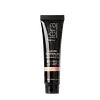What's inside
What's inside
 Key Ingredients
Key Ingredients

 Benefits
Benefits

 Concerns
Concerns

No concerns
 Ingredients Side-by-side
Ingredients Side-by-side

Caprylic/Capric Triglyceride
MaskingBis-Diglyceryl Polyacyladipate-2
EmollientCetyl Alcohol
EmollientVp/Hexadecene Copolymer
Silica Dimethyl Silylate
EmollientAluminum Hydroxide
EmollientAscorbyl Palmitate
AntioxidantPassiflora Edulis Seed Oil
EmollientTocopherol
AntioxidantMicrocrystalline Wax
Emulsion StabilisingPhenoxyethanol
PreservativeTocopheryl Acetate
AntioxidantCaprylyl Glycol
EmollientKaolin
AbrasiveCI 77891
Cosmetic ColorantIron Oxides
Caprylic/Capric Triglyceride, Bis-Diglyceryl Polyacyladipate-2, Cetyl Alcohol, Vp/Hexadecene Copolymer, Silica Dimethyl Silylate, Aluminum Hydroxide, Ascorbyl Palmitate, Passiflora Edulis Seed Oil, Tocopherol, Microcrystalline Wax, Phenoxyethanol, Tocopheryl Acetate, Caprylyl Glycol, Kaolin, CI 77891, Iron Oxides
Water
Skin ConditioningCaprylic/Capric Triglyceride
MaskingBis-Diglyceryl Polyacyladipate-2
EmollientVp/Hexadecene Copolymer
Cetyl Alcohol
EmollientOzokerite
Emulsion StabilisingSilica Dimethyl Silylate
EmollientPhytosteryl Macadamiate
Skin ConditioningPhenoxyethanol
PreservativeChlorhexidine Digluconate
AntimicrobialEthylhexylglycerin
Skin ConditioningHydrolyzed Collagen
EmollientTocopheryl Acetate
AntioxidantAscorbyl Palmitate
AntioxidantRetinyl Palmitate
Skin ConditioningGlycerin
HumectantPropylene Glycol
HumectantSodium Hyaluronate
HumectantSteareth-20
CleansingLecithin
EmollientMagnesium Ascorbyl Phosphate
AntioxidantTocopherol
AntioxidantN-Hydroxysuccinimide
Skin ConditioningChrysin
Skin ConditioningPotassium Sorbate
PreservativePalmitoyl Tripeptide-1
Skin ConditioningPalmitoyl Tetrapeptide-7
Skin ConditioningCI 77891
Cosmetic ColorantCI 77007
Cosmetic ColorantIron Oxides
Water, Caprylic/Capric Triglyceride, Bis-Diglyceryl Polyacyladipate-2, Vp/Hexadecene Copolymer, Cetyl Alcohol, Ozokerite, Silica Dimethyl Silylate, Phytosteryl Macadamiate, Phenoxyethanol, Chlorhexidine Digluconate, Ethylhexylglycerin, Hydrolyzed Collagen, Tocopheryl Acetate, Ascorbyl Palmitate, Retinyl Palmitate, Glycerin, Propylene Glycol, Sodium Hyaluronate, Steareth-20, Lecithin, Magnesium Ascorbyl Phosphate, Tocopherol, N-Hydroxysuccinimide, Chrysin, Potassium Sorbate, Palmitoyl Tripeptide-1, Palmitoyl Tetrapeptide-7, CI 77891, CI 77007, Iron Oxides
 Reviews
Reviews

Ingredients Explained
These ingredients are found in both products.
Ingredients higher up in an ingredient list are typically present in a larger amount.
Ascorbyl Palmitate is created by combining pure Vitamin C and palmitic acid. It is an antioxidant and helps reduce hyperpigmentation.
This ingredient is a more stable version of Vitamin C, meaning it does not disintegrate as quickly when exposed to sunlight. However, studies show it does not penetrate skin as well as pure Vitamin C.
Ascorbyl Palmitate is oil soluble.
Read more about other types of Vitamin C:
Learn more about Ascorbyl PalmitateThis ingredient is lipid-based synthetic skin-conditioning agent derived from adipic acid and a mixture of fatty acids. It is often called a lanolin substitute.
As an emollient, it helps soften and hydrate the skin. Emollients create a barrier on the skin to trap moisture in.
Due to its fatty acid base, it may not be Malassezia folliculitis safe.
Learn more about Bis-Diglyceryl Polyacyladipate-2This ingredient is an emollient, solvent, and texture enhancer. It is considered a skin-softener by helping the skin prevent moisture loss.
It helps thicken a product's formula and makes it easier to spread by dissolving clumping compounds.
Caprylic Triglyceride is made by combining glycerin with coconut oil, forming a clear liquid.
While there is an assumption Caprylic Triglyceride can clog pores due to it being derived from coconut oil, there is no research supporting this.
Learn more about Caprylic/Capric TriglycerideCetyl Alcohol is a fatty alcohol. Fatty Alcohols are most often used as an emollient or to thicken a product.
Its main roles are:
Though it has "alcohol" in the name, it is not related to denatured alcohol or ethyl alcohol.
The FDA allows products labeled "alcohol-free" to have fatty alcohols.
Learn more about Cetyl AlcoholCi 77891 is a white pigment from Titanium dioxide. It is naturally found in minerals such as rutile and ilmenite.
It's main function is to add a white color to cosmetics. It can also be mixed with other colors to create different shades.
Ci 77891 is commonly found in sunscreens due to its ability to block UV rays.
Learn more about CI 77891Phenoxyethanol is a preservative that has germicide, antimicrobial, and aromatic properties. Studies show that phenoxyethanol can prevent microbial growth. By itself, it has a scent that is similar to that of a rose.
It's often used in formulations along with Caprylyl Glycol to preserve the shelf life of products.
This silica is mainly used to thicken oils and suspend particles in oils. It is not water soluble.
According to the manufacturer, it:
The manufacturer also claims this ingredient to be useful in makeup.
In lipstick formulations, this ingredient improves color payoff, reduces pigment settling, and reduces oil bleeding. This ingredient also improves the grip of powder products such as dry shampoos.
Learn more about Silica Dimethyl SilylateTocopherol (also known as Vitamin E) is a common antioxidant used to help protect the skin from free-radicals and strengthen the skin barrier. It's also fat soluble - this means our skin is great at absorbing it.
Vitamin E also helps keep your natural skin lipids healthy. Your lipid skin barrier naturally consists of lipids, ceramides, and fatty acids. Vitamin E offers extra protection for your skin’s lipid barrier, keeping your skin healthy and nourished.
Another benefit is a bit of UV protection. Vitamin E helps reduce the damage caused by UVB rays. (It should not replace your sunscreen). Combining it with Vitamin C can decrease sunburned cells and hyperpigmentation after UV exposure.
You might have noticed Vitamin E + C often paired together. This is because it is great at stabilizing Vitamin C. Using the two together helps increase the effectiveness of both ingredients.
There are often claims that Vitamin E can reduce/prevent scarring, but these claims haven't been confirmed by scientific research.
Learn more about TocopherolTocopheryl Acetate is AKA Vitamin E. It is an antioxidant and protects your skin from free radicals. Free radicals damage the skin by breaking down collagen.
One study found using Tocopheryl Acetate with Vitamin C decreased the number of sunburned cells.
Tocopheryl Acetate is commonly found in both skincare and dietary supplements.
Learn more about Tocopheryl AcetateVP/Hexadecene Copolymer is a synthetic film-forming agent. It has both water and oil loving properties, allowing it to create a flexible, even film on the skin.
This ingredient helps enhance texture, smoothness, and wear resistance in makeup products while reducing tackiness.
This ingredient is a combination of red, black, and yellow iron oxide pigments. This combination of colors is usually found in foundation, because it results in a "skin" color.